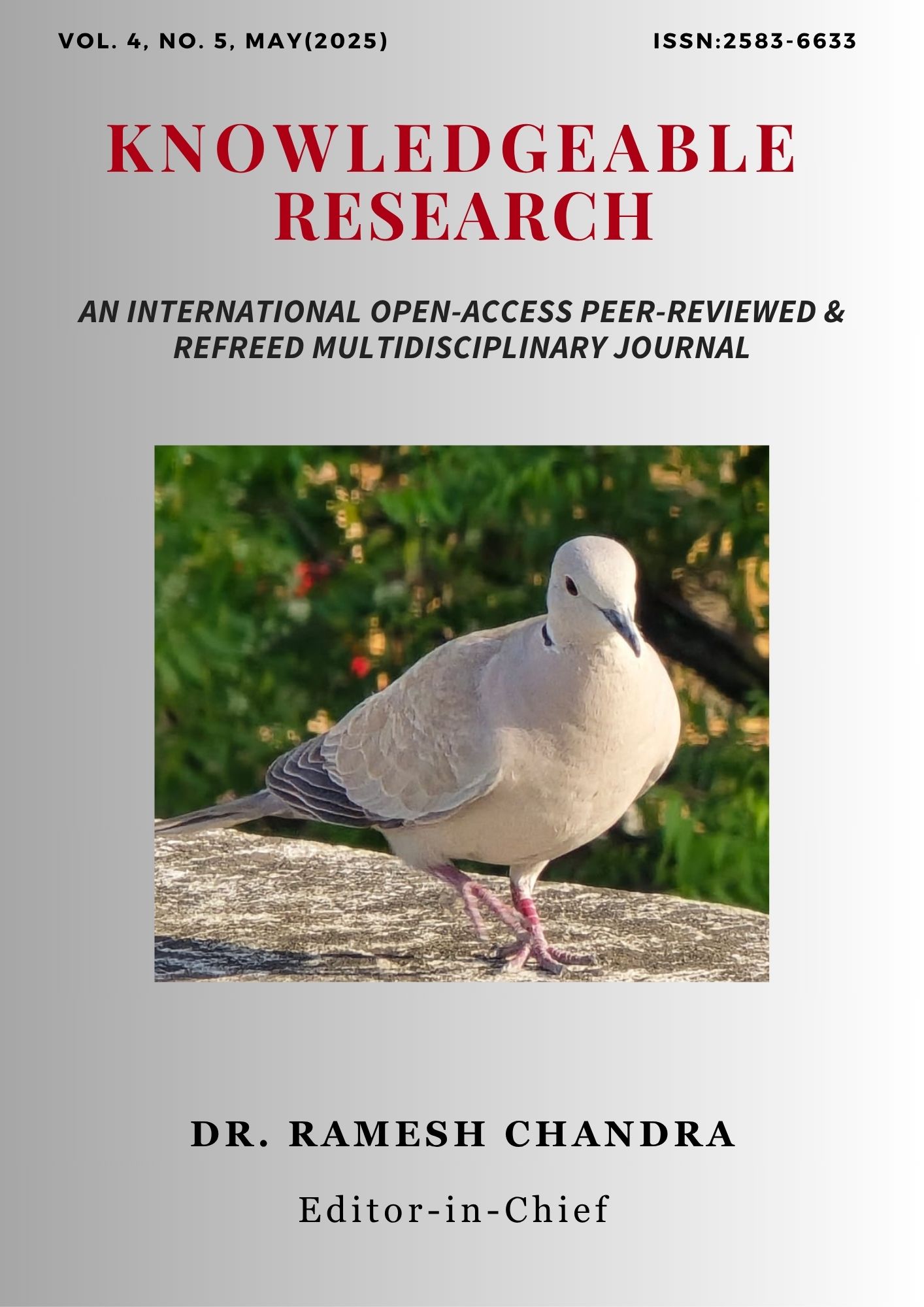Neglected Internal Sources of Public Tertiary Educational Institutions Financing: Strong Reasons Why Public Tertiary Education Institutions are Financially Constrained to Meet Up With their Financial Needs in Nigeria
Main Article Content
Abstract
This paper examines internal sources of tertiary education financing, strong significant reasons why some public tertiary education institutions are constrained to meet up with their financial needs in public tertiary education institutions in Nigeria. Michael Okpara University of Agriculture Umudike, University of Port Harcourt River State are among public tertiary education institutions in Nigeria. Therefore, the two universities are chosen for extraction of population and sample of this study. The population of this study is 16,000 which comprised 9,000 males and 7,000 female students from Michael Okpara University of Agriculture and University of Port Harcourt River state respectively. Stratified random sampling technique was used to obtain 26 male respondents in three departments from Michael Okpara University of Agriculture Umudike and 28 female students in three departments in University of Port Harcourt River State. This gave a sample size of 162. Descriptive survey research design was adopted for this study. One research question and one hypothesis guided this study. Instrument used for data collection was researcher developed questionnaire “titled, internal sources of tertiary education financing, strong significant reasons why some public tertiary education institutions are constrained to meet up with their financial needs in public tertiary education institutions in Nigeria was used,” with four rating scale of strongly agree, agree, dis agree and strongly disagree. The instrument was validated by two specialists. Cronbach alpha statistics was used to determine the reliability coefficient of this study at 0.78 and 0.97, which shows that the instrument is reliable to be used for this study. Mean and standard deviation were used to analyze the data while t test of independent was used to test the hypothesis. The findings from this study reveals that leasing of facilities, sale of agricultural produce, among others, are varied internal sources public tertiary education institutions could use to augment with meager funds provided by government in public tertiary education institutions in Nigeria. It was recommended from this study that some public tertiary education institutions should engage in internal sources of revenue generations such as: Renting and leasing of facilities, pre degree and Jupeb programs, sale of agricultural produce among others.
Downloads
Article Details
Section

This work is licensed under a Creative Commons Attribution-NonCommercial 4.0 International License.
How to Cite
References
Adereounmu, O. & Aina, O. (1988). Managing Nigerian Education Enterprises. John West Publication Lagos.
Adesua, A (1981). “Educational Finance in Nigeria” in Segun Adesina (eds). Introduction to Educational Planning. Ile Ife: University of Ife Press.
Adeyemi, J.K. (1998). “Educational Finance in Nigeria” in Nwadiana, M. (eds). Educational Management for Sub- Saharan Africa, Beninn City: Nigerian Society for Educational Planning.
Adesina, S. (1981). Some Aspects of School Management. Abeokuta and Ibadan. Educational Industries Limited.
Ayeni, A. O. & Babalola, J.B. (2009). Funding options for educational inventions in the educational sector. Ibadan. His Lineage Publishing House.
Adebayo,I. (2016). Funding Nigerian Undergraduate University Education.Retrived from www.Ifeadibyo.comon 21/3/16.
Ehiametalor, E. T & Aderounu, W.O. (1985). Introduction to Administration of Schools in Nigeria. Ibadan: Evans Limited.
Ogunu, M. (2000). Introduction to Educational Management, Benin City. Mabogun Publishers.
Okebukola, P. (2002). The State of University Education In Nigeria. Mimeo Publications.
Olayiwola, (2012). Alternative Perspectives to Funding Public Universities in Nigeria Sustainable Development Education, Business and Management Architecture. Retrieved from www.interchoper,comm retrived on 12/9/13
Onuoha, L. N. (2013). Financing higher education in Nigeria. The role of internally generated revenue and how university management can maximize the sources retrieved from http://support.ebsco.com.
Anyaogu, R.O. (2021). Educational Management and Supervision in a Digital World: Emerging Perspectives. Bon Publications Owerri.
Uruakpa, J.A. & Chioma, I. (2005). Foundation of Education. Ahistorical Approach. Design Prints and Osprey Publications Owerri.
Udo, C.(2008). Alternative Sources of Financing University Education in Nigeria. An International Multidisciplinary Journal. 2(3),98-110.www.ajol. Info/index.php/article/view/410670on 29/3/16.
Uwazuruike, 2019). Professionals in School Bureaucracy. A Nigerian Perspective. Meybiks Nigeria Publication Owerri.
Uwazuruike, C.N.(2021). Educational Planning and National Development. A Nigerian Perspective. Liturgy Communications Owerri
Rowell, E. U. (2016). Financing Higher Education in Nigeria. Retrieve fromwww.Iadr.orgon29/3/16.
Sodunke, (2011). Link Higher School Students Restiveness to Underfunding. The Nations, 20 September 27th.
Sanni, A. (2016). Cost and Alternative Sources of Financing University Education in Nigeria, Retrived from scholar.google.com on4/1/16.

